Vishu
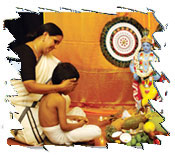
The Vishu festival falls on the first day of medam (April-may), the a stronomical New Year day and Hindus all over the state celebrate it. It is the common belief that the fortunes of the coming year depend on the first object they see on the Vishu day. So the important ceremony connected with Vishu is the kani kanal, which literary means the first sight.
Thrissur Pooram
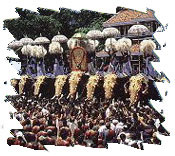
The most spectacular spectacle in the state. Sakthan Thampuran, the Maharaja of erstwhile Kochi state, introduced this festival. Celebrated in Medom (April-May) the festival parades the fulgent faces of Kerala culture. With every passing year Thrissur Pooram, the temple festival, attracts large masses of devotees and spectators.Of the groups displaying their artistic prowess in the Pooram, the prominent are Paramekkavu and Thiruvambadi.
Thiruvathira
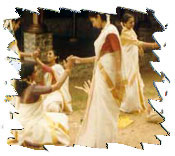
Thiruvathira falls on the month of Dhanu (December January) and is a women's festival. On Thiruvathira morning, devotees throng Shiva temples for an early worship, which is reckoned as highly auspicious. It commemorates the death of Kamadeva, the cupid of Hindu mythology. Thiruvathira is the birthday of Lord Shiva. The festival has similarities to adra darshan celebrated in Tamil Nadu.
Navarathri

The navarathri festival is called Desara in Karnataka and kali puja in Bengal is celebrated by the Hindus of Kerala .The festival is dedicated to Devi, the divine mother and is celebrated in the month of kanni (September- October). The Hindus of Kerala celebrate these days primarily as Saraswathi pooja. Saraswathi is worshipped as the goddess of learning. On the Durggashtami day the puja veppu ceremony is performed
Chittor Konganpada (War festival)

Kerala, once a land of small kingdoms, had witnessed several pitched battles. Few in the state commemorate the war victories of their forefathers. However, people of Chittor in Palakkad district had assimilated a story of triumph into their cultural veins and in every February (on first Monday after the dark lunar in Kumbam, Malayalam calendar) they remember a war they had fought and won.
Sivarathri
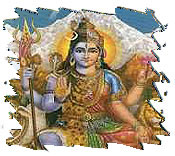
Mahasivarathri is celebrated by the Hindus in Kumbham (February-march). It is supposed to commemorate the day on which lord Siva consumed the deadly poison (kalakutaviaham) to save the world from destruction. The annual Sivarathri festival held on the banks of Periyar at Alwaye is one of the most colourful local festivals of Kerala. The pilgrims keep awake the whole night and return home next morning after performing Bali.
Nellikkulangara Vallanghi Vela
A festival unfurling the cultural faces of Palakkad villages, which are still under, Tamil sway. The festival at the Bhagavathi temple at Vallanghi in Chittur is in fact a competition between two villages-Vallangi and Nenmara- to propitiate the Goddess. Both villages, in their effort to excel the other leave no stone unturned.
Kalpathy Chariot Festival in Palakkad
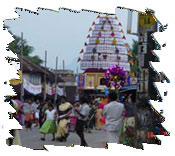
Celebrated in the second week of every November. During the festival season, the Vishwanatha temple and the agraharas (traditional houses) of settler Tamil Brahmins at Kalpathy village will submerge in a sea of devotees. The religious fervour will reach its crescendo when the Brahmins carry the rathams to the temple premise, an age-old ritual that is gaining popularity with every passing year. Five major rathams (car, chariot) are being dragged in the flamboyant procession accompanied by caparisoned elephants and percussion.
Kettukazcha

An important festivity associated with temple festivals in the Kollam and Alleppey districts is the Kettukazcha or Kutirakettu. The main feature of the festival is that people from different karas adjoining the temple concerned bring huge rathams or cars varying in height. The images of Hindu gods and goddesses and effigies of puranic figures like Bhima, Panchali, hanuman etc., are kept in the ratham. Oachira, near Kayamkulam, has emblazoned its name in the chronicle of war.
Vallom Kali
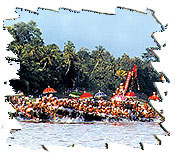
Among the typical festivals of Kerala the vallomkali or boat regatta has a place of honour. The most important of the boat regattas are held during the Onam season in chingam (August-September) in the Alappuzha and Kottayam districts. Aranmula is the venue of the famous sake boat regatta held on the uttrattati day in connection with the Onam festival.
Aranmula Uthrittathi
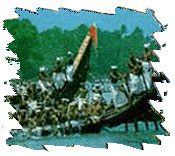
Jalolsavams evoke the waves of enthusiasm in the minds of Southern Keralites. Its history is flirting with, paddling with river gods. Down the years the boat race has accrued sporting value and tourism importance. For ages, Keralites have cherished a reverential attitude to rivers. It is the apt time for Keralites to hold the Jalotsavam (water-carnivals). Boat race is in a way a display of physical might of the people who forget their differences in partaking of this sport
Nilamperoor Padayani

A festival that re flects the tradition and the culture of rural Kerala, Padayani is being held at Nilamperoor Bhagavathikkavu at Kuttanad in Alapuzha. Kolamkettu (making of effigies) and Kollamthullal (a ritual dance performed by carrying the effigies) are the main attractions of the festival. The chief Kolams displayed are of Shiva, Bhima and Ravana.
Sabarimali festivals-Vrishikam (November December)
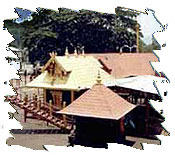
For centuries, Sabarimala in Pathanamthitta has been a major pilgrim centre attracting lakhs of devotees from all over India, more so from southern States. The presiding deity is Lord Ayyappa known as Dharma Sastha, a considered symbol of unity between Vaishnavites and Saivites. Darma Sastha is believed to have fulfilled his mission in life and rejoined his Supreme Self, enshrined at Sabarimala.
Other important Hindu festivals
Pooram festival- Meenum (March-April)
Thye pongal, mattu pongal-makaram (January February)
Ashtami at Vaikom-kumbham (February-March)
Christian Festivals
The common festivals of the Christians are the Christmas and the Easter.
Christmas

Christmas, which falls on the 25th of December, commemorates the birth of Jesus Christ. It is jovial and spectacular celebration with many customs and conventions associated with it. The Christmas tree will be arranged and the appearance of Santa Claus (the Christmas father) and the distribution of presents follow this. There is a feast in every Christian home on Christmas day with meat as a special item. The Christmas cake has now become very popular even in villages. All the Keralites with out any difference celebrate Christmas.
Easter

Easter, though not a spectacular as Christmas, is the oldest Christian festival, as old as Christianity itself. It commemorates the resurrection of Jesus Christ and falls in the month of April. The holy week of Easter is preceded by 40 days of fast and prayer (lent). The week begins with Sunday and special prayers are offered during this week. The whole Easter celebration has its accent on spirituality rather than festivity.
Maramon convention
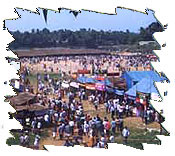
The largest Convention in Asia, Maramon is held on the sands of River Pampa, at Kozhancheri, near Tiruvalla in Pathanamthitta district. Every year tens of thousands of Christians attend the convention to hear the Word of God and seek His grace. Erudite orators from various countries address the 10-day long convention. Of the years Maramon has become a meeting place of culture and tradition.Maramon is also famous as the birthplace of Palakkunnath Abraham Maplah, a 19th century leader of the Syrian Church of Malabar.Preaching and Bible studies occupy the major part of the conference Along with the religious discourse, special prayers for indisposed are also held.
Church festivals.
St.George's church, Edathwa-27 April to 7th may.
St.Sebastian's church, Arathungal- 20th January to 31st January.
St George's church, Aruvithura-22nd to 24th April.
St Thomas Shrine, Malayattur-last week of March or first week of April.
St Mary's orthodox church, Manarcad - September 1st to 9th.
Parumala, Mannar.
Muslim festivals
The major festivals observed by the Muslims of Kerala, as elsewhere in the world, are Bakrid (idul azha) and Ramzan (Idul fitr). The Kerala Muslims valiya perunnal and the latter Cheriya Perunnal call the former.
Bakrid

The Bakrid commemorates Ibrahim's (Abraham) offering of his only son as a sacrifice in obedience to god's command. The Muslims enjoy hearty feasts on Bakrid day. The rich may sacrifice a he goat or a bullock and distribute it among friends, relatives and the poor. The famous hajj is performed after the celebration of idulazha.
Idul Fitr

Idul Fitr is celebrated after the conclusion of the Ramzan fast when Muslims give up all kind of food and drink during the day and spend the major part of the night prayer. Idul-Fitr, of late known by the misnomer 'Ramadan' is one of the two festivals of Islam. Ramadan is the ninth month of the lunar year. Purification of the body and soul is the main aim of this observance. Recently in certain parts of Kerala new practices in connection with the celebration of this festival have been introduced. One of the novel features of the Id celebration is to invite members of the sister communities to participate in such functions.
Miladi Sharif

Miladi Sharif, celebrated on a large scale in April, commemorates the birth of the prophet. This celebration has acquired its present dimensions only in recent times. Previously the day was observed by the Muslims by reading what is commonly known as maulud which is a short treatise in Arabic celebrating the birth, life, work and sayings of the prophet or some saint.
Muharram
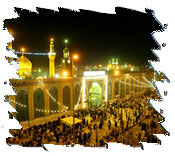
Muharram is another festival celebrated by Muslims on the 10th day of Muharram the forbidden month, which marks the beginning of the Hijra year.
PERFORMING ARTS
Koothu :: Koothu is a socio-religious art performed in the Koothambalam or the Koothuthara of temples, either independently or as part of Kootiyattam. It is a solo narrative performance interspersed with mime and comic interludes. The Chakkiar dons the role of ' Vidushaka' or the wise jester. Through his inimitable narration of stories from the epics ( The Ramayana and The Mahabharatha), the Chakkiar satirises the manners and customs of the time. No one is above the butt of his ridicule. His wit ranges from innocent mockery to veiled innuendoes, barbed pun and pungent invectives. Koothu is intermittently accompanied by the percussion instrument Mizhavu |
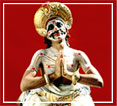
|
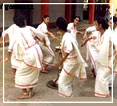 |
|
Margomkali :: Margomkali is a ritual folk art of the Syrian Christians of Kottayam and Thrissur districts. A dozen dancers sing and dance around a lighted wick lamp ( Nilavilakku), clad in the simple traditional white dhoti and sporting a peacock feather on the turban to add a touch of colour.This is an allegorical enactment with the lamp representing Christ and the performers his disciples. The performance is usually held in two parts and begins with songs and dances narrating the life of St.Thomas, the apostle. It then takes a striking turn with a martial play of artificial swords and shields. |
Kathakali :: Kerala owes its transnational fame to this nearly 300 years old classical dance form which combines facets of ballet, opera, masque and the pantomime. It is said to have evolved from other performing arts like Kootiyattam, Krishnanattam and Kalarippayattu. Kathakali explicates ideas and stories from the Indian epics and Puranas.Presented in the temple precincts after dusk falls Kathakali is heralded by the Kelikottu or the beating of drums in accompaniment of the Chengila (gong). The riches of a happy blending of colour, expressions, music, drama and dance is unparallelled in any other art form. |
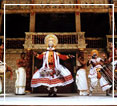 |
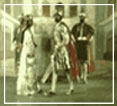 |
|
Chavittunatakom :: A Christian art form of Kerala. Evolved at the turn of the 16th Century AD during the Portuguese colonization and bears definite traces of the European Christian Miracle Play. In this musical drama, the actors wear Greco-Roman costumes and even the stage props bear several foreign influences. In the past, the Chavittunatakom was performed on open stages, though sometimes the interior of a church was also a venue. The language is a colloquial mix of Tamil and Malayalam. |
Oppana :: A dance form essential to the wedding entertainment and festivities of the Malabar Muslims. Maidens and young female relatives sing and dance around the bride, clapping their hands. The songs of Mappilappattu, are first sung by the leader and are repeated by the chorus. The themes are often teasing comments and innuendoes about the bride's anticipated nuptial bliss. Oppana is often presented as a stage item today |
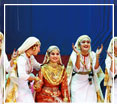 |
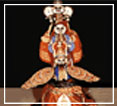 |
Krishnanattom :: A spectacle for both the scholar and the simple rustic. The visual effect is enhanced by varied and colourful facial make-up with larger-than-life-masks, made of light wood and cloth padding, for certain characters. The characters who do not wear masks have specific facial colours applied within the frame of a white chutti. The predominant colours used are dark green, flesh tint and deep rose. Most of the characters wear red vests and flowing 'Uthariyams'. The characters of Krishna, Arjuna and Garuda wear dark blue vests. |
Mohiniyattom :: The sinuous dance of the enchantress, this is a distinctive classical dance form of Kerala. Slow, graceful, swaying movements of the body and limbs and highly emotive eye and hand gestures are unique to this dance form. The simple, elegant gold-filigreed dress, in pure white or ivory, is akin to the traditional attire of the women of Kerala. The origin of Mohiniyattom is rooted in Hindu mythology. Once the ocean of milk was churned by the gods and demons to extract the elixir of life and immortality. The demons made away with this divine brew. |
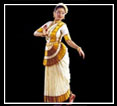 |
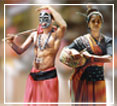
|
Kakkarissi natakom :: Kakkarissi natakom is a satirical dance-drama based on the puranic legends of Lord Siva and his consort Parvati when they assumed human forms as Kakkalan and Kakkathi - a nomadic tribe of fortune tellers. The legend only serves as a skeletal framework for the play, which often turns into a subtle critique of contemporary society.The language is a blend of Tamil and Malayalam. The chief characters are Kakkalan, Kakkathi, Vetan, Velichappadu, Thampuraan and the ubiquitous Jester. The Dholak, Ganchira,Chenda and the Harmoniumprovide the background score. |
Thiruvathirakali :: Thiruvathirakali is a dance performed by women, in order to attain everlasting marital bliss, on Thiruvathira day in the Malayalam month of Dhanu (December- January). The dance is a celebration of marital fidelity and the female energy, for this is what brought Kamadeva (the god of love) back to life after he was reduced to ashes by the ire of Lord Siva. The sinuous movements executed by a group of dancers around a nilavilakku, embody 'lasya' or the amorous charm and grace of the feminine. The dance follows a circular, pirouetting pattern accompanied by clapping of the hands and singing. Today, Thiruvathirakali has become a popular dance form for all seasons |
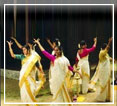
|
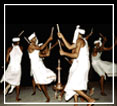 |
Kolkkali :: A folk art mainly of the agrarian classes, Kolkkali is a highly rhythmic dhey never miss a beat. In Malabar, Kolkkali is more popular among Muslim men. |
Thullal :: Thullal is a solo performance combining the dance and recitation of stories in verse. Staged during temple festivals, the performer explicates the verses through expressive gestures. The themes are based on mythology. This satiric art form was introduced in the18th century by the renowned poet Kunchan Nambiar . |
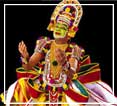 |
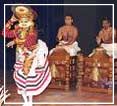 |
Kutiyattam :: Kutiyattam literally means "acting together". This is the earliest classical dramatic art form of Kerala. Based on Sage Bharatha's 'Natyasasthra' who lived in the second century, Kutiyattam evolved in the 9th century AD.Kutiyattam is enacted inside the temple theatre, there are two or more characters onstage at the same time, with the Chakkiars providing the male cast and the Nangiars playing the female roles. The Nangiars beat the cymbals and recite verses in Sanskrit, while in the background Nambiars play the Mizhavu, a large copper drum. |
Duffmuttu :: Duffmuttu is also known as Aravanamuttu. It is a group performance popular among the Muslims of Malabar. Duffmuttu is staged as a social event during festivals and nuptial ceremonies.The artistes beat on a quaint round percussion instrument called the Duffu, the leader of the group sings the lead, while the others form the chorus and move in circles. The songs are often tributes to martyrs, heroes and saints. |
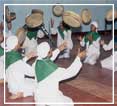
|
Local festivals
Jarram nercha-Thervath mosque, Pallanchathanur
Nercha festival-Ottapalam mosque
Jarram nercha-Theruvath mosque
Malappuram nercha-Malappuram mosque
Kodikuthu festival-Kanjiramattom mosque
Chandanakkudam festival-Beemapalli, Thiruvananthapuram.
|